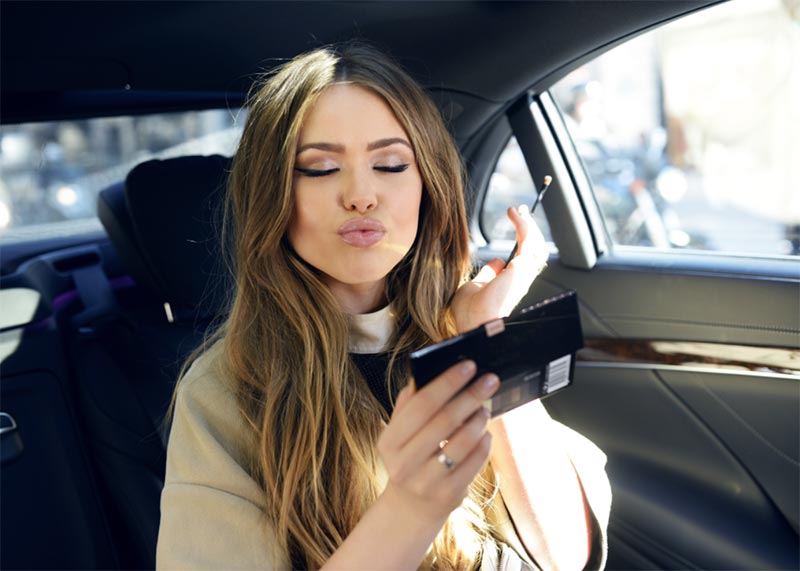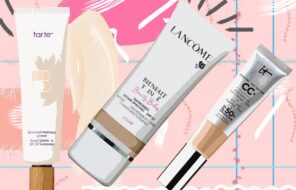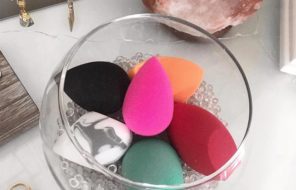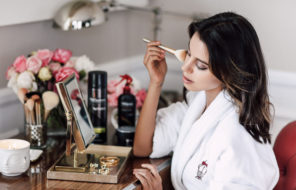Whether it’s the rain and snow or the pool and beach, every season sometimes calls for waterproof makeup. Maybe it’s weddings that have you worried about your carefully applied makeup slipping and sliding since if you’re anything like me, nothing gets your tear ducts going as quickly as couples exchanging wedding vows. That is why knowing all the tips and tricks on having totally waterproof makeup can come in handy every once in a while.
In this article, I’ll cover all the bases of waterproof makeup, so you can look flawless, whether you’re facing a rainy day or participating in a cool underwater photoshoot. I explain exactly what it is that makes waterproof makeup so excellent at holding up against moisture. I’ll give some suggestions for when it is the right time to use it. To seal the deal, I also have some extra tips & tricks for waterproofing that beat.
In this article:
What Is Waterproof Makeup?
Waterproof makeup products are the big guns, made to hold up against the greatest watery threats. Waterproof makeup exists in all categories, although of course waterproof mascaras are the most well known and beloved.
However, there are also waterproof foundations, face powders, eyeshadows, eyeliners, brow fillers, bronzers, blushes, and lipsticks. Notably, there are also waterproof sealants and powders that transform regular makeup into waterproof.
What Is Waterproof Makeup Made of?
There are many ingredients commonly used in makeup that holds up against water. Waxes like beeswax, paraffin, and carnauba wax, all kinds of oils, and silicones like cyclomethicone and dimethicone are particularly excellent at repelling water.
These ingredients show up in most makeup formulations because all makeup has to repel water to a certain extent – after all, humans produce sweat no matter what, and makeup has to hold up against that.
The ingredients that make waterproof makeup impossible for water to penetrate are specific polymers that are able to form a water-resistant film over the skin or lashes once they evaporate. There are many different kinds of waterproofing polymers used in cosmetics, so look for ingredients that end in “copolymer” or “crosspolymer” to know that a product is truly waterproof.
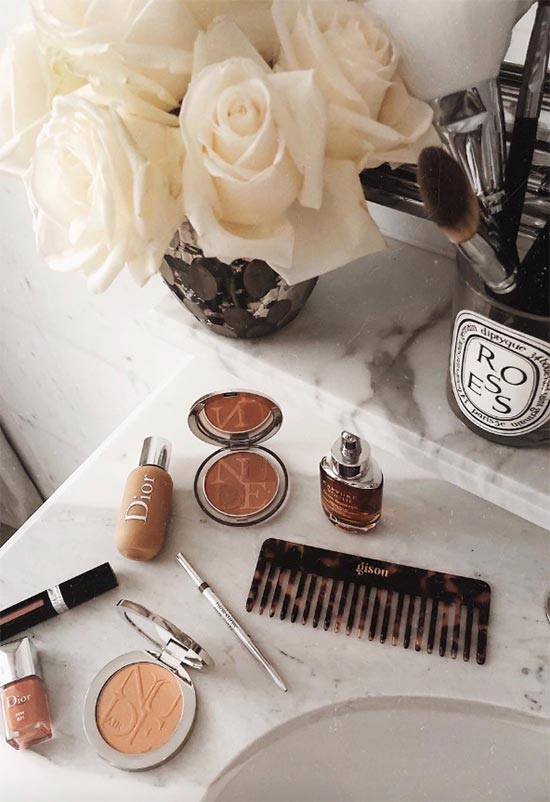
When to Use Waterproof Makeup?
Waterproof makeup is strong stuff, so most people don’t need to use it on a daily basis. The perfect time to break out the waterproof makeup products is when you want to wear a full face of makeup, but know that you are likely to get very wet throughout the day.
I don’t think it’s necessary to wear a full face of makeup to the beach, waterpark, or pool on most occasions, but if that’s what you’re into, then waterproof makeup might come in handy for you. For me, a full face of waterproof makeup makes sense for an underwater photoshoot or a special occasion that has the potential to get watery due to the weather or tears.
Those with hyperhidrosis, a condition that causes excessive sweating, might find the need to use waterproof makeup products on a daily basis, as regular makeup may not hold up. People with sensitive eyes that tear up easily might find the need to only use waterproof makeup products around their eyes, like waterproof mascara, eyeliner, or under-eye concealer.
Despite what some myth-mongers like to say, there is no added risk that waterproof makeup will clog your pores or cause acne as long as it is removed correctly. However, waterproof makeup is much harder to remove than regular or even water-resistant makeup; that is why I give really clear waterproof makeup removal instructions in another article, and it is why I don’t think it is necessary on a day-to-day basis.
Waterproof vs. Water-Resistant Makeup
When I talk about waterproof makeup here, I meant seriously impervious to water. Waterproof makeup products are made to completely hold up against large quantities of water. With waterproof makeup products you should be able to totally submerge your face, and still have your makeup be completely in tact.
Water-resistant makeup products, on the other hand, are not quite as heavy-duty. They should hold up on your average sweaty day (though perhaps not against a session of hot yoga) or if you get caught in a light drizzle. For the most part you can reserve the waterproof makeup products for the long beach and pool days, or for events when you are sure to be crying.
These days most mascaras are water-resistant to a certain extent, since they are made with waxes, ingredients that hold up well against water. The same applies to foundations, which are usually made with water-repelling silicones, oils, and waxes. The big difference between water-resistant makeup and waterproof makeup comes from film-forming ingredients as polymers.
Waterproof Makeup Tips for a Longer-Lasting Makeup Look
Waterproof makeup products are amazing at keeping makeup in tact, but the truth is that with a bit of know-how you can get even regular makeup products to last through a liquid assault.
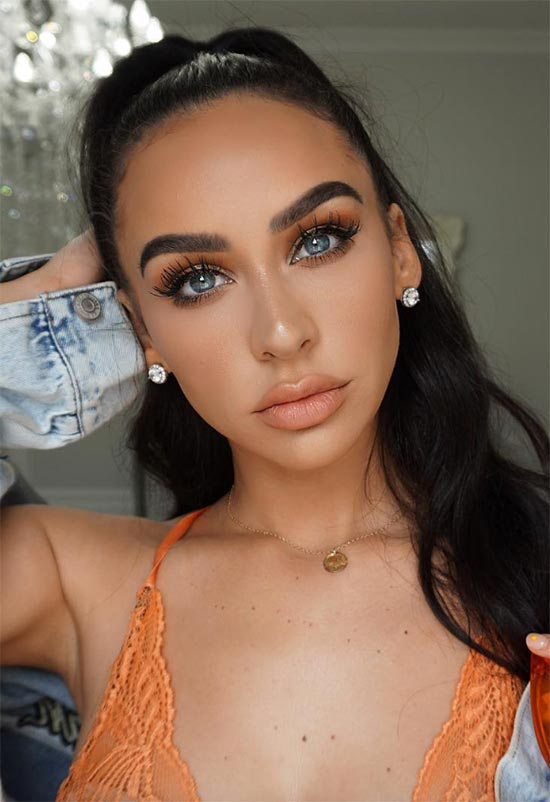
- The biggest secret to waterproof makeup, even if the products themselves are not technically waterproof, is using a very thin layer of cream and a lot of powder. This means that you want to apply your foundation in as thin a layer as possible, and then you want to make sure to powder it well by using a big brush and applying with a stippling motion.
- The same principle applies to other makeup items, like blush, bronzer, contour, and highlight. You can apply a cream contour or blush first, and layer a translucent powder or a powder version of the product on top to lock it into place and make it waterproof.
- Baking your foundation is another great way of really locking it into place, no matter what kind of weather you face. Using a powder puff or a damp beauty blender, press the powder into your skin in a thick layer. Let it sit on your skin for about five minutes, and then brush away the excess with a fluffy brush.
- I use the same trick for waterproofing my eyebrows as I do for waterproofing my eyeliner. I cannot leave the house without my eyebrows filled in, but nothing is worse than having them smudge off, while eyeliner I could realistically do without for a day. No matter which one it is that you can’t live without, follow the same principle: first apply a cream product like a gel or pencil eyeliner or eyebrow pencil or pomade as you normally would. Then, with a thin angled brush set that first layer with a matching eyeshadow or eyebrow powder. This guarantees that your brows and eyeliner will not budge, even in a heavy rain.
- A great eyeshadow primer is all that is needed to prevent eyeshadow from smearing in water, but if you don’t have one on hand a thin layer of concealer under your eyeshadows will suffice!
- When it comes to mascaras, you can enjoy a bit of both worlds by combining regular and waterproof formulas. By putting on a layer of regular mascara followed by a layer of waterproof mascara you will make it much easier to clean off your eye makeup at the end of the night, but still have your look be resistant to water.
- A lot of the time, spending all day in the water also means spending all day in the sun. Don’t forget to apply a layer of sunscreen with at least 30 SPF before applying your waterproof makeup. You can use a face powder or a spray with an SPF throughout the day to refresh the protection.
- When it comes to skin care, gel-based products will feel much lighter sitting under your makeup, and they will prevent it from melting off as easily.
Photos via @kristinabazan, Instagram

